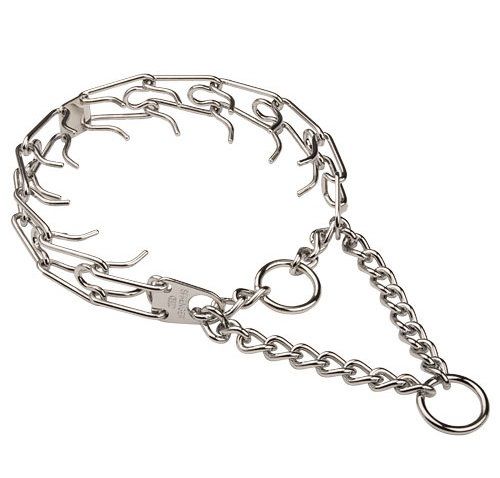By Gaby Dufresne-Cyr, CBT
In the light of recent events regarding a dog named Simon and a pig, I would like to address beliefs. You might wonder why I wish to chat about convictions when I could discuss aggression, trainer…
Read more
Mar 16 2016
By Gaby Dufresne-Cyr, CBT
In the light of recent events regarding a dog named Simon and a pig, I would like to address beliefs. You might wonder why I wish to chat about convictions when I could discuss aggression, trainer…
Read more
Mar 8 2016
By Gaby Dufresne-Cyr, CBT
It's snowy and rainy today. The overcast weather is predicted for the entire day, ugh! This is the type of day I dread the most because I feel grumpy, tired, and unproductive. I look at my…

Nov 23 2015
By Gaby Dufresne-Cyr, CBT
Lately, it seems, people want their dogs to be perfect. More and more people register for puppy classes to start their dogs off right. Then people register for private sessions, enroll in dog sports, obedience…

Oct 13 2015
By Gaby Dufresne-Cyr, CBT
Statistically, the number of pet professionals who read my article each week represents approximately half of the people who visit my blog; consequently, I try to write about various topics to satisfy the wide range of…

Sep 6 2015
By Gaby Dufresne-Cyr, CBT
Professional recognition is one of my life goals. I believe Dog training and behaviour consultation are at a turning point in history. Too many improvised professionals or outdated practitioners are inadvertently causing harm to animals and…
Read more
Sep 1 2015
By Gaby Dufresne-Cyr, CBT
Over the last twelve years, I've been fortunate enough to have spent time in both zoological and non-zoological training environments, and let me tell you, there's a big difference when it comes to training. This week… Read more
Jul 7 2015
By Gaby Dufresne-Cyr, CBT
Many people confuse lure with reinforcement training. The confusion might come from the fact that both techniques use food to train animal behaviours. My goal this week is to shed light and expose the differences between…

Jun 23 2015
By Gaby Dufresne-Cyr, CBT
This week I want to talk about a subject really close to home, dog training methodologies. You would think dog training evolved since my childhood days, but it seems, the more things change, the more they…

May 26 2015

May 11 2015

Apr 28 2015
By Gaby Dufresne-Cyr, CBT
Working with animals is extremely rewarding, but it also yields a dirty secret, people in our line of work burn out. We change bad behaviour into good behaviour, we improve the human-animal bond, we teach, we…

Mar 31 2015

Feb 3 2015

Jan 27 2015

Jan 20 2015
By Gaby Dufresne-Cyr, CBT
While we certainly don't encourage people to buy puppies for Christmas, tis the season for thou new bundle of joy to enrol in puppy class. Puppy socialisation classes aim to teach puppies how to communicate as…

Jan 13 2015
By Gaby Dufresne-Cyr, CBT
This post is intended for pet owners, dog training, and behaviour professionals. It might be a negative read for some while being informative for others. If you are upset about this article, please leave a comment…

Nov 12 2014

Nov 5 2014
By Gaby Dufresne-Cyr, CBT-FLE
The catchphrase think outside the box means thinking in new ways to release one's creative potential. In the dog training world, thinking outside the box means stopping training with traditional punishment-based methods and letting new positive…
Read more
Oct 29 2014
By Gaby Dufresne-Cyr, CBT-FLE
What is communication?
Dictionaries state:
1. The ability to communicate and establish a relationship with others brings me to the word communicate.
2. To give knowledge and share it with someone.
3. To be in a…

Oct 23 2014
By Gaby Dufresne-Cyr, CBT-FLE
In the last Blog, I tried to persuade readers to engage in a healthy discussion about being a dog professional. Today, we will take a look at learning and resilience. Note: to keep this article short…
Read moreOct 16 2014
By Gaby Dufresne-Cyr, CBT-FLE
This article will undoubtedly appear as a controversial piece to many, so be it! I accept the divergence of opinions, for I am open to constructive criticism and capable of objective dialogue. My purpose is to…

Oct 1 2014
By Gaby Dufresne-Cyr, CBT-FLE
This might surprise some readers outside the dog profession; therefore, I urge you to brace yourselves for what I am about to say. Dog training is an unrecognized profession with no educational standards or governing body…
Read more
Sep 4 2014
By Gaby Dufresne-Cyr, CBT-FLE
Many years of observation led me to believe that sociability is genetic; that is to say, we are born sociable or not. Instinctively the majority of people believe this statement without having scientific proof to back…

Aug 28 2014
By Gaby Dufresne-Cyr, CBT-FLE
This article aims to teach pet owners how to make and use interactive toys. City dogs spend most of their time alone; as a result, they get bored and destructive. Separation anxiety is often the result…

Jul 18 2014
By Gaby Dufresne-Cyr, CBT-FLE
Pet owners often say My dog knows when I feel good or bad. This statement remained unverified by the scientific community, till now. In a recent report published in the scientific journal New Scientist (Guo, 2008)…